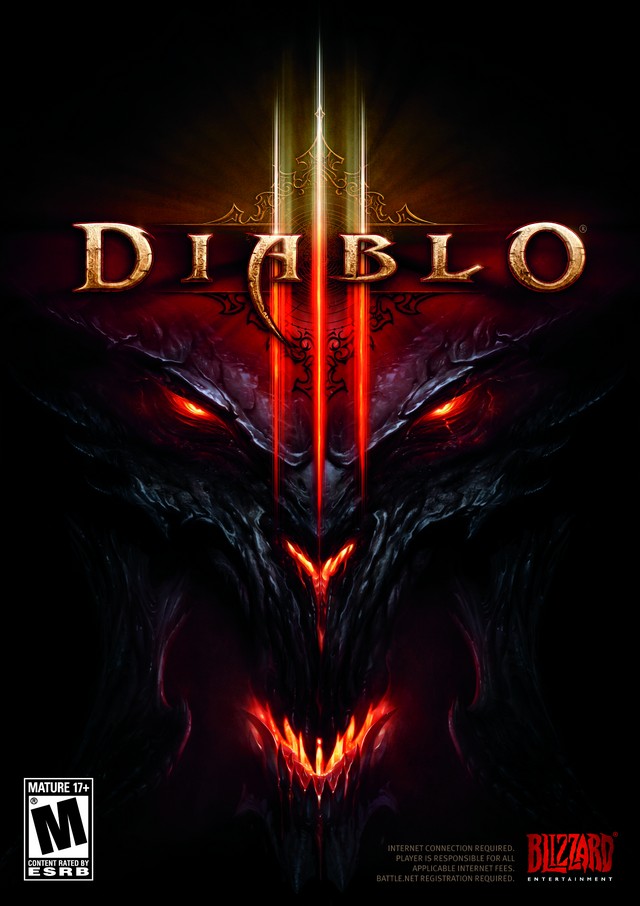Diablo III Interview
-
Category: InterviewsHits: 9035

Article Index
Page 1 of 2
When Diablo III was finally announced, we were pretty excited. When we found out that Fallout/Troika alumnus Leonard Boyarsky would be working on it, our excitement spiked considerably. And, when it became clear that Leonard was committed to expanding the franchise's storytelling and dialogue, we knew we had to get an interview. As it turned out, Leonard was willing to set aside some time to answer our questions:GB: It's good to hear from you again, Leonard! What have you been up to since the closure of Troika Games and how did you wind up being the lead world designer on Diablo III?
Leonard: It's good to be back to a place where I can be heard from, especially working on this project. After Troika closed, I took a year off to recover from severe burnout. I wasn't sure I wanted to work in games anymore and began to get my art portfolio together to possibly pursue freelance illustration work. While that was enjoyable, I found that I missed designing games and working with a team. And when Blizzard asks if you want to work on the story and RPG elements for the next Diablo game, that's hard to turn down.
GB: What are your responsibilities on the Diablo III team? What do your day-to-day activities consist of?
Leonard: Officially, I am responsible for expanding the lore and world of the Diablo universe and helping to create the story for Diablo III. As far as my day-to-day work, I work on quests, write lore, work with the cinematics department to plan out our movies, make sure our RPG vision is being implemented -- basically, I work on anything and everything design-related that doesn't have to do with numbers or game balance.
GB: Why was the decision made to keep the isometric viewpoint of the original Diablos and was there ever any doubt or discussion on using the same camera scheme in today's market? What are the advantages and disadvantages of using an isometric viewpoint for a game like Diablo III?
Leonard: There was never any question that we'd be using the isometric view. The advantages for this camera angle are many: It is the established camera angle for the series; we want our game to expand and improve on the classic Diablo feel, which is irrevocably tied to isometric gameplay; and we are able to create art specifically for that camera angle, which allows us to place polygons and textures strategically, so our game looks great and highly detailed while also running well on a wide range of systems. I suppose one possible disadvantage is that it is harder to involve the player on an emotional level for scripted scenes, because the characters are small and aren't in the player's face like they are from other camera angles -- but that's what we have our cinematics for.
GB: Do you think the switch to a fully 3D engine was absolutely necessary? What challenges, limitations, and opportunities does the switch from 2D to 3D present?
Leonard: The switch was absolutely necessary for us to make the game we wanted to make. Current technology is geared towards 3D optimization, so we get to use that power, which in turn allows us to have better animations, more detailed art, and better gameplay because of things like physics. The main challenge is to retain the feel of the classic Diablo games while expanding into 3D.
GB: Since you're working on a franchise that many members of the development team did not originally work on, how important is it to study and remain relatively close to the work done on the first two games?
Leonard: I think it's very important to really look at what has gone before and honor it and capture its flavor. If you're going to change something, you'd better have a good reason. I'm only talking about lore and the world here -- every game series is expected to iterate and improve on controls, skill systems, and so on for every sequel. I think above all, tone is important. People like Diablo for certain reasons; we have that overall feel at the core of the game and are expanding from there in a logical direction.
We actually have quite a few people from Blizzard North on the team -- our lead programmer, animator, and concept artist are all from Blizzard North, for example -- and I work closely with Chris Metzen, Blizzard's senior vice president of creative development, who has been involved in the story of the Diablo series from the very beginning.


